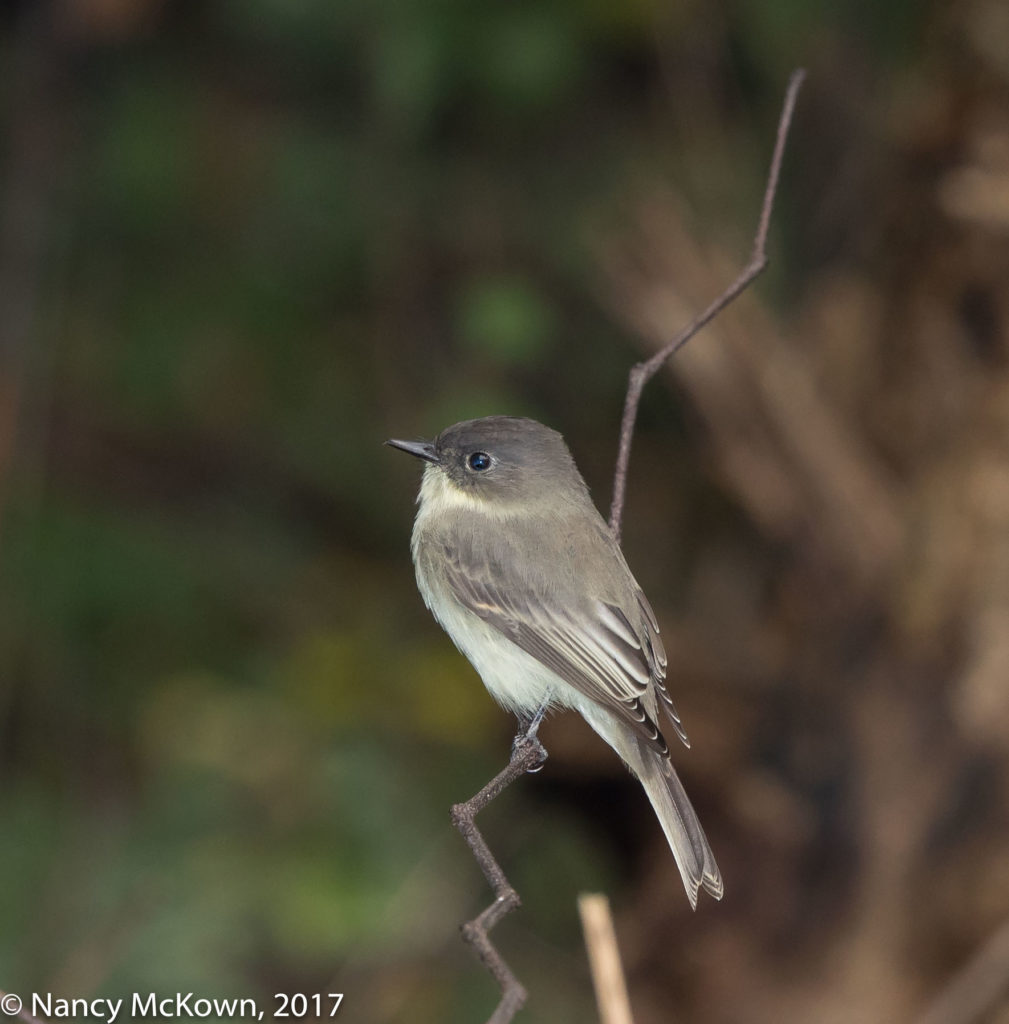Warm Weather Ambush
We’re expecting warmer weather here in SW Michigan this week. Just an ambush, I’m sure, but it gets me thinking about my upcoming Spring migration bird photography adventures. The warm weather will be a nice respite, even though we know the brutal cold will be back. The migrating birds won’t be fooled.
Photographing An Eastern Phoebe
This little flycatcher is an Eastern Phoebe with a darkish bill and no wing bars. He sat on his zig-zaggy branch for quite a long while and varied his pose not at all. The camera and 500mm lens were tilted down toward his near ground level perch. The cluttered, deep woods backdrop was less than 3 feet away. The ambient light was sufficient to illuminate the perch and the wooded background equally. (NOTE: I used the camera’s DOF button to see if the background would appear darker compared to the subject.). To get more feather detail, I attached the flash with extender and played with flash intensity (FEC) to add some fill light on the subject. Given the close proximity of the subject with his background, I was quite surprised that, at F/8 aperture, the lens delivered such a pleasing bokeh.

Rare Appearance Near the Feeders
ISO800; f/8; 1/250 Second
Lenses are Not Eye Glasses
When I attach a tele-extender or swap lenses on my dSLR cameras, I often stand under a bright light to check out how much dust and lint have accumulated on the glass and contacts. There’s usually a lot.
I’ve seen photographers clean their lenses like they would their spectacles….breathe a mist and wipe it against their pant leg, or use their fingernails, or spray a couple pumps of windex directly onto the glass. They are asking for trouble.
Proper Lens Maintenance
It is perfectly normal for dust to attach to a lens and most dust does not impact the images. Once it is removed, more dust will reattach in short order. Professional lenses are designed (from the seals to the protective coatings) to stand up to all sorts of abuse, including dog slobber, ocean spray, chlorinated water mist, fine beach sand and wind debris.
The only tools I ever use on my lenses are a small blower (no brush attached) and a lens pen. I don’t use a cloth because it tends to just smear. (NOTE: Clear protective multi-coated glass filters that protect lenses from scratches, dust, moisture and fingerprints are not made for the front elements of large, telephoto lenses.)
The best way I’ve found to assess the extent of dust and debris on my lenses is to look for them on my images. I use Lightroom’s spot removal function, click on the visualize box and see if there are any suspicious spots. If spots are there, you can easily fix the images, but you most likely do not have the tools and knowledge to disassemble and clean the lens…. plus you risk voiding the warranty. It’s best to send it in to a certified lens maintenance shop and let them take care of it.








